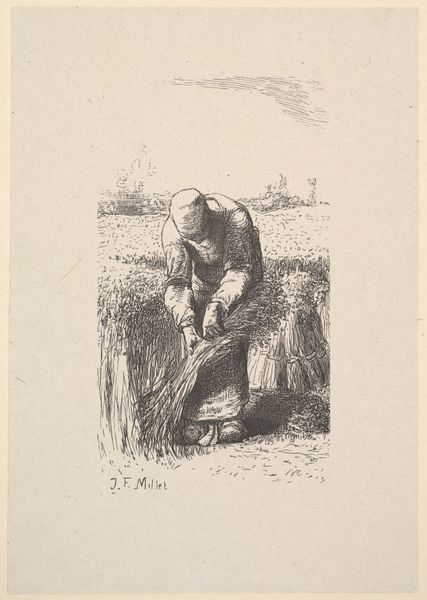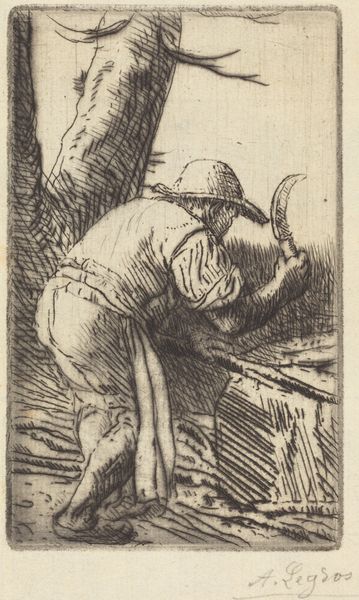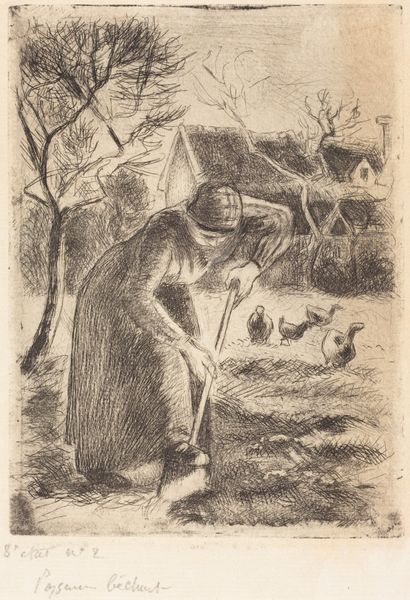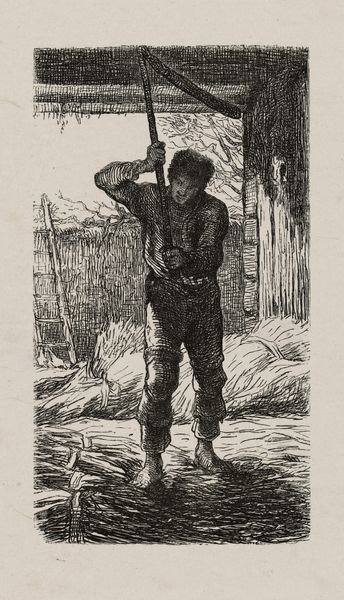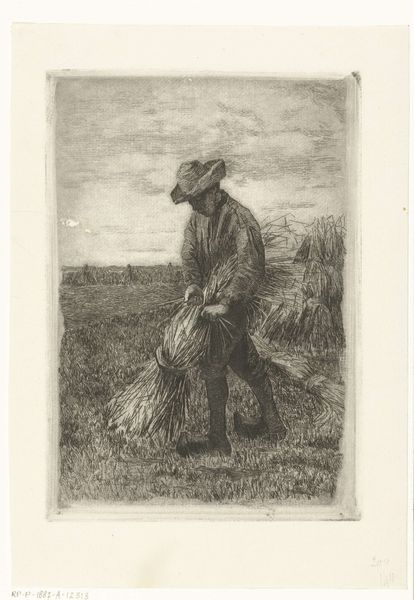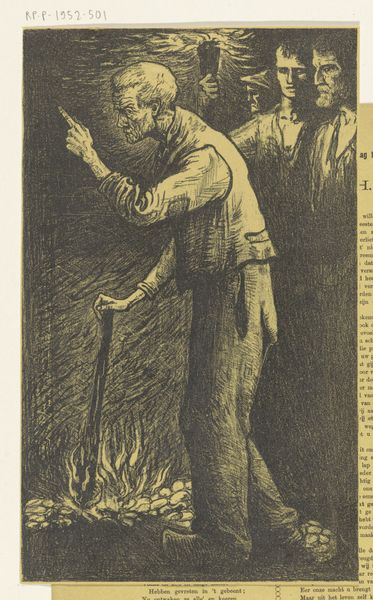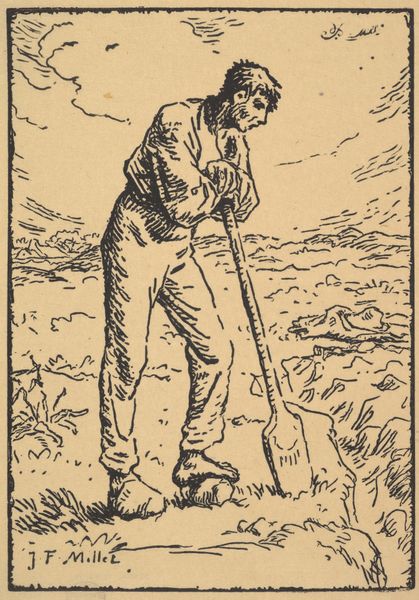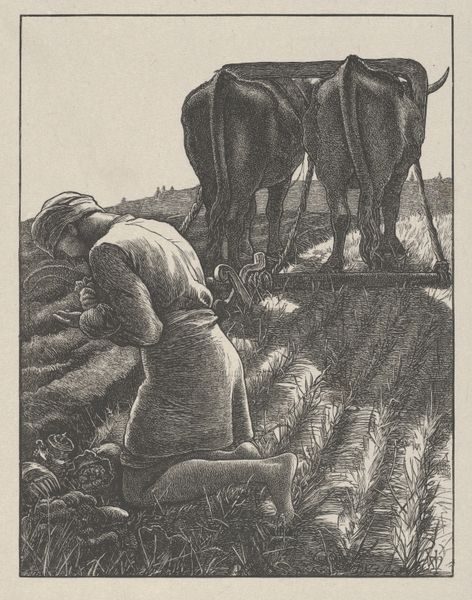
drawing, print, paper, engraving
#
drawing
# print
#
landscape
#
paper
#
france
#
genre-painting
#
engraving
#
realism
Dimensions: 132 × 75 mm (image); 182 × 131 mm (primary support); 291 × 234 mm (secondary support)
Copyright: Public Domain
Curator: Here we have Jacques-Adrien Lavieille's rendering after Jean-Francois Millet, "Woman Pulling Flax," a work likely dating from after 1853. It's presented as both a drawing and a print here at the Art Institute of Chicago. Editor: It's somber, isn't it? That stooped posture, the scratchy lines. Makes you feel the weight of the work. And yet there is beauty there too. Curator: Absolutely. It captures the essence of labor, situating women's work within the grand narrative of Realism that was brewing in France. This image speaks volumes about the economic and social position of women in rural 19th-century France, suggesting layers of historical inequity, I think. Editor: Inequity, yes, but also resilience. She's not just toiling, she's participating in something essential. You can almost smell the earth and hear the wind. Did they romanticize this or bring some truth to the harsh work? Curator: The interesting thing is that "Realism" was self-conscious. The stark imagery pushes back against the idealized depictions of rural life that preceded it, though it isn't completely without its own selective glorifications. To understand Lavieille's choices and Millet's, you need to consider their social context, the political movements that impacted their visual vocabulary. How did they frame this figure to either uphold or resist the accepted hierarchy? It’s a print but what kind of access did the working class have to these kinds of images at this time? Editor: Good questions, I suppose the debate lies exactly there, it's that tension in what is shown and for what aim. All the thinking and theory put aside, she still reminds me of my own grandmother working in the fields back home. Hands roughened by labor, but creating something, you see? Curator: And it's that emotional connection that allows these historical narratives to transcend time. I see labor, gender, and class intersecting powerfully here. Editor: It’s a quiet image, demanding consideration. Makes me grateful and a little sad, all at once. Curator: Precisely. And hopefully sparks the necessary interrogations to deepen our comprehension. Editor: A reminder that art isn’t just about beauty, it's about connection, questioning, and hopefully, a little empathy.
Comments
No comments
Be the first to comment and join the conversation on the ultimate creative platform.



